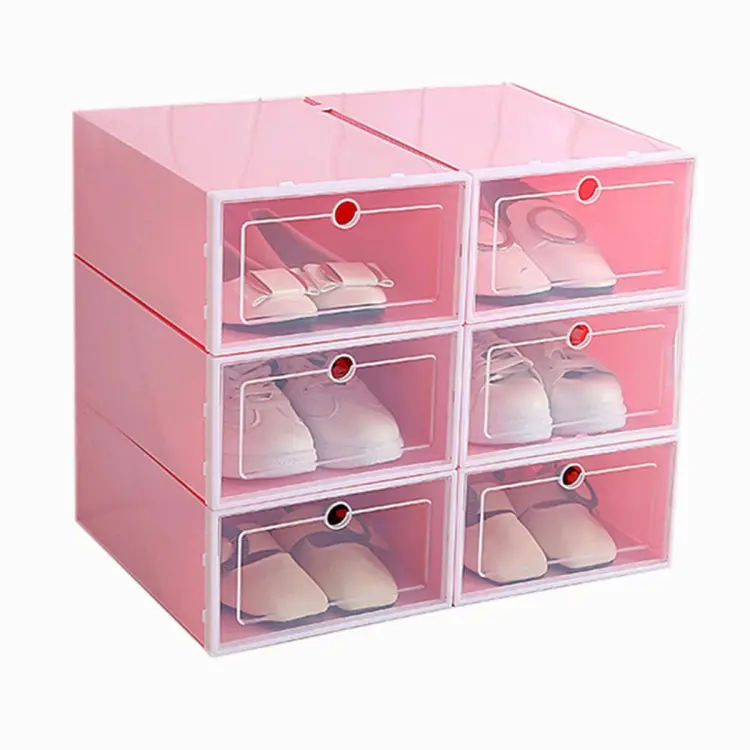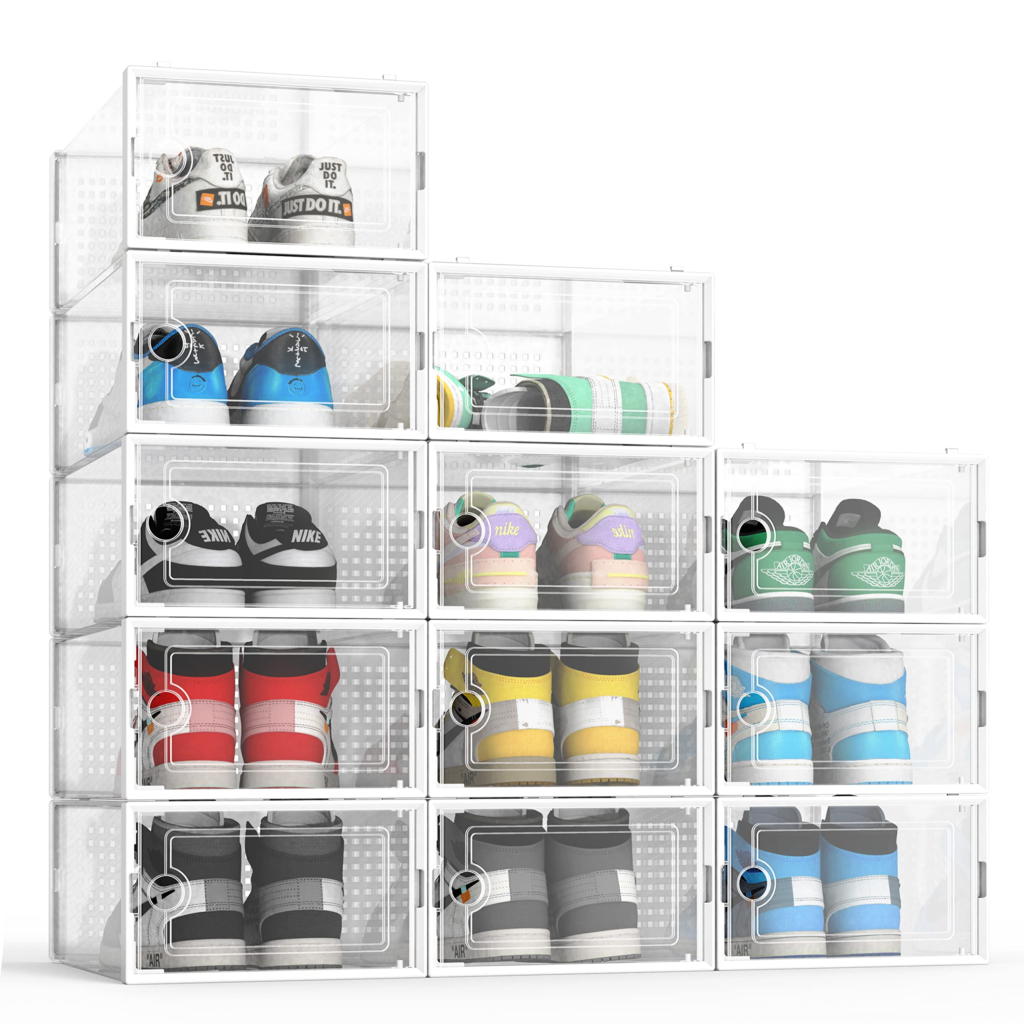As a manufacturer deeply entrenched in the world of plastic products, I’ve come to understand the ins and outs of crafting quality plastic shoe boxes. In this guide, I’ll walk you through the essential steps and considerations required to manufacture durable, functional, and aesthetically pleasing plastic shoe storage solutions.
Crafting plastic shoe boxes requires attention to detail and a thorough understanding of the manufacturing process. From selecting the right materials to optimizing the design for functionality, each step plays a crucial role in producing high-quality products that meet consumer needs.




1: Material Selection
Choosing the right materials is paramount to the success of any plastic shoe box. Opt for durable, high-quality plastics such as polypropylene or polyethylene, which offer excellent strength and resistance to wear and tear. These materials provide the durability necessary to withstand the weight of shoes and the rigors of everyday use.
2: Design Considerations
When designing plastic shoe boxes, prioritize functionality and practicality. Incorporate features such as ventilation holes to allow air circulation and prevent moisture buildup, ensuring shoes remain fresh and odor-free. Additionally, consider stackability and space-saving designs to optimize storage efficiency.
3: Size and Dimensions
Ensure your plastic shoe boxes are available in a range of sizes to accommodate different shoe types and sizes. From flats to boots, offering various dimensions ensures customers can find the perfect fit for their footwear collection. Standard sizes should include options for both men’s and women’s shoes.
4: Lid Design
The design of the lid plays a crucial role in the functionality of plastic shoe boxes. Opt for lids that securely snap or lock into place to prevent dust, dirt, and pests from entering the box. Additionally, consider transparent lids to allow for easy identification of stored shoes without the need to open each box.
5: Durability Testing
Before mass production, conduct rigorous durability testing to ensure your plastic shoe boxes can withstand the demands of daily use. Test for impact resistance, load-bearing capacity, and resistance to environmental factors such as temperature fluctuations and UV exposure. Only products that meet stringent quality standards should be released to the market.
6: Eco-Friendly Options
In response to growing environmental concerns, consider offering eco-friendly plastic shoe boxes made from recycled materials or biodegradable plastics. By prioritizing sustainability, you can appeal to eco-conscious consumers and differentiate your products in the market.
7: Customization Options
Provide customization options such as color choices, label holders, and branding opportunities to cater to diverse customer preferences. Offering personalized solutions allows customers to tailor their storage solutions to suit their individual needs and preferences.
In conclusion, crafting plastic shoe boxes requires careful attention to detail, from material selection to design considerations and quality testing. By following these essential steps and considerations, manufacturers can produce high-quality products that meet the needs of consumers while staying ahead in a competitive market.






